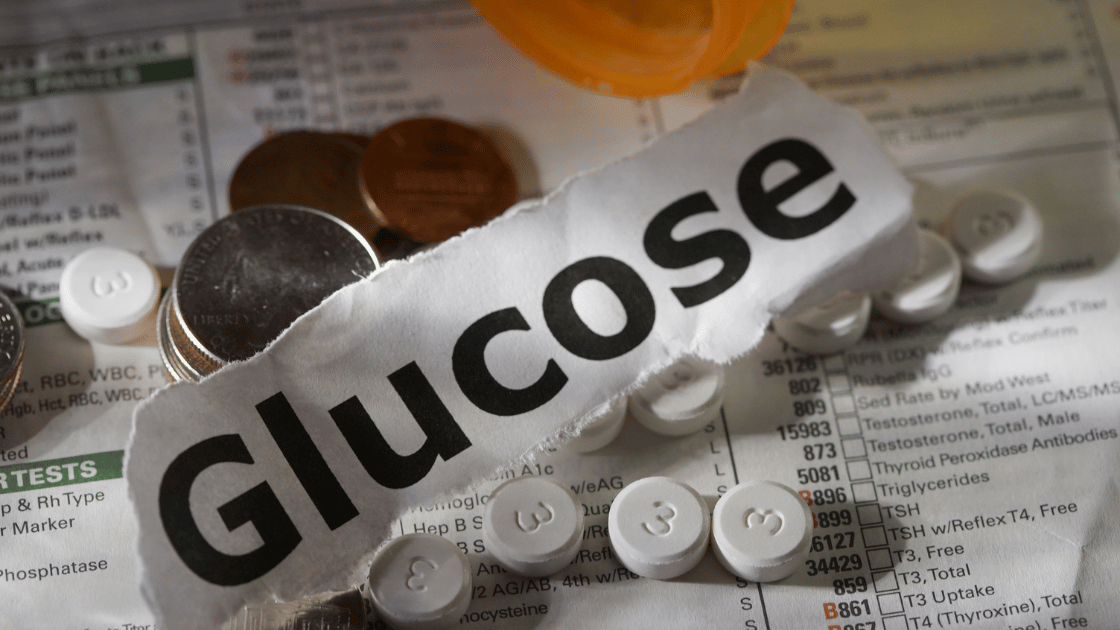What is Glucose: Types & Health Benefits

Glucose is a vital component that fuels the body’s cells and serves as a primary source of energy for muscle, fat, and other cells. It plays a crucial role in the body’s functioning, impacting various physiological processes. This article will delve into the diverse types of glucose, their sources in food, their significance in promoting health, and strategies for maintaining optimal levels.
Key Takeaway
The primary focus of this article is to explore the different types of glucose, their sources in food, their role in health, and methods for ensuring balanced levels. By understanding the nuances of glucose and its impact on overall well-being, readers can gain valuable insights into optimizing their dietary choices and lifestyle practices.
Throughout this article, we will cover the following main topics:
- Understanding Glucose: The Basics
- Exploring the Various Types of Glucose
- The Impact of Glucose on Health and Well-being
- Maintaining a Healthy Glucose Balance
- The Consequences of Uncontrolled Glucose Levels
- Taking Charge: Strategies for Managing Glucose Levels
Understanding Glucose: The Basics
Glucose is a fundamental component of the body’s energy production system and plays a crucial role as the primary source of fuel for various cellular activities. It serves as the main type of sugar found in the bloodstream, commonly referred to as blood sugar. This essential molecule is utilized by muscle cells, fat cells, and other bodily tissues to generate the energy required for optimal functioning.
The Role of Glucose in Energy Production
As a simple carbohydrate, glucose is easily absorbed into the bloodstream, providing a quick and efficient source of energy for the body. Its classification as a simple carbohydrate underscores its rapid breakdown and utilization by cells, making it an essential nutrient for sustaining overall bodily functions.
The Significance of Glucose in Blood Sugar Regulation
Glucose also plays a vital role in blood sugar regulation. When we consume carbohydrates, they are broken down into glucose during digestion and released into the bloodstream. In response to rising blood sugar levels, the hormone insulin is secreted by the pancreas to facilitate the uptake of glucose into cells, where it can be used for energy.
Understanding the basics of glucose involves recognizing its significance as both an energy provider and a vital component of blood sugar regulation. By comprehending its role in the body’s metabolic processes, individuals can make informed decisions regarding their dietary choices and overall health management.
Exploring the Various Types of Glucose
When it comes to understanding glucose, it’s helpful to know that there are different types out there. Let’s take a look at some of them and the natural foods where they can be found:
Glucose Types and Natural Food Sources:
1. Natural Food Sources
- Fruits: Apples, oranges, and berries
- Vegetables: Sweet potatoes, carrots, and beets
- Whole Grains: Oats, quinoa, and brown rice
These whole foods not only provide glucose for energy but also come with a bunch of other good stuff like vitamins, minerals, and fiber. They’re a great choice for keeping your body healthy and well-nourished.
By incorporating these natural food sources into your diet, you can ensure a well-rounded intake of glucose while benefiting from the array of nutrients that accompany it. This approach promotes balanced energy levels and overall health without relying on processed or refined sources of glucose.
2. Processed Foods and Added Glucose
Examine the Role of Processed Foods
Processed foods, such as sugary snacks and beverages, significantly contribute to excessive glucose intake due to added sugars. These added sugars are often in the form of various glucose types derived from high-fructose corn syrup, dextrose, maltose, and other refined sweeteners. The molecular structure of these added glucose types can differ from those found in natural food sources, impacting how the body processes and utilizes them.
Impact on Glucose Intake
When consuming processed foods with added glucose, the body may experience rapid spikes in blood sugar levels due to the quick absorption of these simple carbohydrates. High intake of added glucose can lead to a range of health issues, including insulin resistance, weight gain, and an increased risk of type 2 diabetes. Unlike natural food sources that provide a balance of nutrients alongside glucose, processed foods often lack essential nutrients and fiber. This can result in a less satiating effect and potentially lead to overconsumption of added sugars.
Understanding Monosaccharides
Monosaccharides are the simplest form of carbohydrates and include glucose, fructose, and galactose. While natural food sources contain naturally occurring monosaccharides within their cellular structure, processed foods may introduce isolated forms of these sugars into the diet.
Promoting Awareness
It is crucial for individuals to be mindful of their consumption of processed foods high in added glucose to maintain a balanced and nutritious diet. By recognizing the presence of added sugars in various products and understanding their impact on overall glucose intake and health, individuals can make more informed dietary choices.
By shedding light on the role of processed foods in contributing to excessive glucose intake through added sugars, individuals can better understand the significance of distinguishing between natural food sources and processed options. This awareness empowers individuals to make informed decisions about their dietary habits for improved overall well-being.
The Impact of Glucose on Health and Well-being
Glucose plays a crucial role in supporting overall health and well-being as the primary source of energy for the body. In this section, we will delve into how glucose affects our muscles and their function, as well as its significance in energy production.
1. Fueling Muscles, Powering Performance
Glucose serves as a vital fuel source for muscles, making it essential for exercise performance and recovery. Here’s how glucose impacts our muscles:
- Energy Source: During physical activity, our muscles require energy to perform optimally. Glucose provides this energy by breaking down through a process called glycolysis, producing ATP (adenosine triphosphate) – the body’s primary energy currency. This ATP fuels muscle contractions and enables us to engage in various activities, from aerobic exercises like running to strength training routines.
- Muscle Function: Glucose not only fuels muscle contractions but also supports their function. It helps maintain muscle glycogen levels, which are stored glucose molecules within the muscles themselves. Adequate glycogen stores are crucial for sustaining endurance during prolonged exercise sessions and preventing muscle fatigue.
- Exercise Performance: Consuming carbohydrates before exercise can increase circulating glucose levels, providing readily available fuel for working muscles. This can enhance exercise performance by delaying fatigue and improving endurance. It is especially beneficial for engaging in high-intensity activities or longer-duration workouts.
- Recovery: After intense exercise, our muscles undergo stress and microdamage. Consuming carbohydrates post-workout helps replenish glycogen stores and facilitates muscle repair and recovery. By refueling with glucose-rich foods or beverages, we can optimize the recovery process and promote muscle growth.
Incorporating glucose into your pre- and post-workout nutrition plan can significantly impact your exercise performance and overall fitness levels. Prioritizing carbohydrate-rich foods such as fruits, whole grains, and starchy vegetables can ensure an adequate supply of glucose for your muscles.
Pro Tip: To maximize the benefits of glucose for muscle function and recovery, consider consuming a combination of carbohydrates and protein after workouts. This can further support muscle repair and growth.
By understanding the importance of glucose as a fuel source for our muscles, we can make informed choices about our nutrition and optimize our physical and sport performance. However, it’s essential to maintain a balance and avoid excessive glucose consumption, which can lead to potential health issues.
The Glucose-Fat Connection: Balancing Act
Glucose metabolism and fat storage are closely connected and play a vital role in managing body weight and energy balance. Understanding how glucose and fat interact can give us valuable insights into how imbalances can affect our overall health.
Energy Balance
- Primary Source of Energy: Glucose is the main source of fuel for our bodies, especially during intense physical activities and exercise. Our muscles preferentially use glucose to power our movements and help us perform at our best.
- Storage for Future Use: When there’s excess glucose available and we don’t need immediate energy, it gets stored as glycogen in the liver and muscles. Once these glycogen stores are full, any extra glucose is converted into fatty acids and stored as triglycerides in fat cells.
Insulin’s Role
- Regulator of Metabolism: Insulin is a hormone that plays a crucial role in managing both glucose and fat metabolism. When our blood sugar levels rise after a meal, the pancreas releases insulin to help our cells take in glucose for energy.
- Influence on Fat Storage: At the same time, insulin inhibits the breakdown of fat stores and encourages the storage of excess nutrients, including glucose, as fat. It acts like a gatekeeper, deciding whether to use or store these nutrients based on our immediate energy needs.
Imbalanced Levels
- Effects of High-Glycemic Carbohydrates: Consuming too many high-glycemic carbohydrates can cause rapid spikes in blood sugar levels, triggering a large release of insulin. Over time, this pattern can contribute to insulin resistance, where our cells become less responsive to insulin’s signals. As a result, blood sugar remains elevated, and more fat gets stored.
- Consequences of Low Blood Sugar: Prolonged periods of low blood sugar can lead to the release of hormones that promote fat breakdown for energy. This can potentially result in weight loss.
Health Implications
- Associated Risks: Chronic imbalances in glucose and fat metabolism are linked to a higher risk of obesity, type 2 diabetes, cardiovascular disease, and other metabolic disorders.
- Impact on Heart Health: Elevated levels of triglycerides in the blood, which come from excess glucose and dietary fats, can contribute to the buildup of plaque in our arteries and increase the risk of heart disease.
- Influence on Inflammation: Fat cells also produce hormones and inflammatory substances that can affect our overall metabolic function and cause systemic inflammation.
By understanding how glucose metabolism affects fat storage, we can see why it’s important to keep our blood sugar levels stable. This can be done by making dietary choices that prioritize:
- Complex carbohydrates
- Fiber-rich foods
- Lean proteins
- Healthy fats
Regular physical activity also helps our muscles use glucose efficiently and promotes healthy levels of fats in our bodies. Striking a balance between glucose metabolism and fat storage allows us to optimize how our body uses fuel for long-term well-being.
Beyond Energy: Diverse Functions of Glucose in the Body
Glucose is not just a source of energy for the body; it also plays a vital role in various cellular processes that contribute to overall health and wellness. Here are some of the diverse functions of glucose in the body:
1. Brain Function:
- The brain relies heavily on glucose as its primary fuel source. It uses about 20% of the body’s total glucose supply, despite accounting for only 2% of its overall weight.
- Glucose provides the energy needed for neurotransmitter synthesis, which is essential for proper communication between brain cells.
- Optimal glucose levels support cognitive function, memory, focus, and overall mental well-being.
2. Immune Response Regulation:
- Glucose is crucial for a well-functioning immune system. Immune cells, such as lymphocytes and macrophages, require glucose to carry out their functions effectively.
- Glucose serves as an energy source during immune responses, allowing immune cells to multiply rapidly and mount a robust defense against pathogens.
- Inflammatory responses, which are part of the immune system’s defense mechanism, also rely on glucose metabolism.
3. Cell Functions:
- Glucose is involved in various cellular processes that are essential for maintaining optimal health.
- It plays a role in DNA synthesis, ensuring proper cell division and growth.
- Glucose is required for protein synthesis, which is necessary for building and repairing tissues.
- It is also involved in lipid metabolism, contributing to the production and storage of fats within cells.
These are just a few examples of how glucose goes beyond being an energy source and actively participates in critical physiological functions. Maintaining stable glucose levels is vital to support these processes and ensure optimal bodily functions.
“Glucose serves as the primary fuel for the brain and immune system. It contributes to cognitive function, memory, and overall mental well-being. Additionally, glucose plays a significant role in cell functions such as DNA synthesis, protein synthesis, and lipid metabolism.””
Maintaining a Healthy Glucose Balance
Glucose balance is crucial for overall health, and maintaining optimal blood sugar levels is essential to prevent various complications, especially for individuals with diabetes. Understanding the methods and devices used for monitoring blood glucose levels is key to effective management. Let’s delve into the different approaches to blood glucose monitoring and the technologies available for this purpose.
1. Monitoring Blood Glucose: Methods and Devices
Traditional Self-Testing Methods
Traditional self-testing methods involve using a blood glucose meter and lancet needle to obtain a small blood sample, typically from the fingertip. Here’s an overview of the process:
- Blood Glucose Meter: This portable device measures the concentration of glucose in the blood sample. It provides quick results, allowing individuals to monitor their blood sugar levels at home or on the go.
- Lancet Needle: A lancet is used to prick the fingertip, drawing a small drop of blood that is then placed on a test strip inserted into the meter for analysis.
Self-testing offers convenience and immediate feedback, enabling individuals to make timely adjustments to their treatment plans based on their glucose levels.
Continuous Glucose Monitoring (CGM) Systems
Continuous glucose monitoring technology has revolutionized the way individuals track their blood sugar levels. CGM systems consist of three main components:
- Sensor: The sensor, usually worn on the abdomen or arm, continuously measures glucose levels in the interstitial fluid throughout the day and night.
- Transmitter: This component sends data from the sensor to a receiver or smartphone app, providing real-time glucose readings and trends.
- Receiver/Smartphone App: Users can view their current glucose level, track patterns over time, set alerts for high or low readings, and make informed decisions about insulin dosing and dietary choices.
CGM systems offer several advantages over traditional self-testing methods:
- Real-Time Data: Continuous monitoring provides immediate feedback on glucose fluctuations, reducing the risk of both hyperglycemia and hypoglycemia.
- Trend Analysis: Users can visualize trends in their glucose levels over several hours, helping them understand how their bodies respond to food, physical activity, and medication.
- Alerts and Alarms: CGM systems can alert users to impending high or low glucose levels, promoting proactive management of blood sugar.
It’s important to note that while CGM systems offer valuable insights, traditional self-testing methods are still commonly used as a complementary approach to confirm readings and calibrate CGM devices.
By understanding and utilizing these monitoring methods and devices effectively, individuals can take proactive steps towards maintaining healthy blood sugar levels and mitigating potential risks associated with uncontrolled glucose fluctuations.
Understanding Hypoglycemia and Hyperglycemia
The body carefully regulates glucose levels through the coordinated action of the pancreas and the hormone insulin. This delicate balance is essential for maintaining optimal health and functioning. Let’s explore the concept of homeostasis, as well as the symptoms, causes, and potential risks associated with hypo- and hyperglycemic episodes.
Homeostasis: The Body’s Glucose Regulation System
To understand hypoglycemia and hyperglycemia, it’s important to grasp the concept of homeostasis. Homeostasis refers to the body’s ability to maintain stable internal conditions despite external fluctuations. In terms of glucose regulation, this means keeping blood sugar levels within a relatively narrow range.
The pancreas plays a crucial role in this process by producing insulin. When blood glucose levels rise after a meal, the pancreas releases insulin into the bloodstream. Insulin facilitates the uptake of glucose by cells throughout the body, allowing them to use it for energy or store it for later use.
Conversely, when blood glucose levels drop too low, the pancreas reduces its production of insulin. This prevents excess glucose uptake by cells and encourages alternative mechanisms to raise blood sugar levels.
Hypoglycemia: Low Blood Sugar Levels
Hypoglycemia occurs when blood sugar levels dip below normal ranges (typically below 70 mg/dL). It can be caused by various factors, including:
- Medications: Certain diabetes medications, such as insulin or sulfonylureas, can lower blood sugar levels.
- Skipping meals or inadequate carbohydrate intake: Not consuming enough carbohydrates can deprive the body of its primary source of glucose.
- Excessive physical activity: Strenuous exercise without sufficient fuel can deplete glucose stores.
- Alcohol consumption: Drinking alcohol without consuming food can lead to a rapid drop in blood sugar levels.
- Medical conditions: Certain health conditions, such as adrenal insufficiency or liver disease, can affect glucose regulation.
Symptoms of hypoglycemia may vary depending on the severity and individual response but commonly include:
- Shakiness or tremors
- Sweating
- Fatigue or weakness
- Hunger
- Irritability or anxiety
- Confusion or difficulty concentrating
- Rapid heartbeat
- Headaches
If left untreated, severe hypoglycemia can lead to more serious symptoms, including seizures, loss of consciousness, and even coma. Prompt treatment is crucial to avoid complications.
Hyperglycemia: High Blood Sugar Levels
Hyperglycemia occurs when blood sugar levels rise above normal ranges (typically above 130 mg/dL). It is most commonly associated with diabetes, but it can also occur in individuals without diabetes due to various factors, including:
- Insufficient insulin production: In people with type 1 diabetes, the pancreas produces little to no insulin.
- Insulin resistance: In people with type 2 diabetes, the body’s cells become resistant to the effects of insulin.
- Inadequate medication management: Failing to take prescribed diabetes medications as directed can lead to uncontrolled blood sugar levels.
- Stress or illness: Physical or emotional stress, as well as certain illnesses, can cause blood sugar levels to rise.
Symptoms of hyperglycemia may include:
- Frequent urination
- Increased thirst
- Fatigue or weakness
- Blurred vision
- Dry mouth
- Headaches
Prolonged periods of untreated hyperglycemia can have serious consequences for health. Over time, high blood sugar levels can damage organs and blood vessels, leading to complications such as heart disease, kidney disease, nerve damage, and vision problems.
It’s important to note that individuals with diabetes should regularly monitor their blood sugar levels using methods like self-testing with a blood glucose meter or continuous monitoring technology like CGM systems. This allows for early detection and management of hypo- or hyperglycemic episodes.
Understanding the symptoms, causes, and potential risks associated with hypoglycemia and hyperglycemia is crucial for individuals with diabetes and those without. By maintaining a healthy lifestyle, managing diabetes effectively, and monitoring blood glucose levels closely, individuals can help prevent complications associated with unregulated glucose levels.
The Consequences of Uncontrolled Glucose Levels
Uncontrolled glucose levels can have serious consequences on your health and well-being. Poor management of glucose can lead to various complications that affect different parts of your body. It’s important to understand the potential risks associated with uncontrolled glucose levels so that you can take steps to manage your blood sugar effectively.
1. Numbness, Heart Disease, and Other Risks
One of the risks associated with uncontrolled glucose levels is numbness and tingling in the hands and feet. This condition, known as peripheral neuropathy, is a result of nerve damage caused by high blood sugar levels over time. Numbness can make it difficult to perform daily tasks and can also increase the risk of injuries due to decreased sensation.
Heart disease is another serious consequence of uncontrolled glucose levels. High blood sugar levels can damage the blood vessels and lead to atherosclerosis, a condition where plaque builds up in the arteries. This can restrict blood flow to the heart and increase the risk of heart attacks and other cardiovascular problems.
In addition to numbness and heart disease, uncontrolled glucose levels can also contribute to other health complications such as:
- Blindness: Diabetes is a leading cause of blindness in adults. High blood sugar levels can damage the blood vessels in the eyes, leading to diabetic retinopathy. This condition can cause vision loss and even blindness if left untreated.
- Skin infections: Elevated blood sugar levels can impair the immune system’s ability to fight off infections. As a result, people with uncontrolled glucose levels may be more susceptible to skin infections such as cellulitis, abscesses, and fungal infections.
- Joint pain: High blood sugar levels can cause inflammation in the joints, leading to pain and discomfort. This can affect mobility and decrease quality of life.
These are just a few examples of the potential risks associated with uncontrolled glucose levels. It’s important to note that everyone’s experience with diabetes and its complications can vary, and the severity of these complications can depend on individual factors such as genetics, lifestyle, and overall health.
Key Takeaways
- Uncontrolled glucose levels can lead to various health complications, including numbness, heart disease, blindness, skin infections, and joint pain.
- Peripheral neuropathy, characterized by numbness and tingling in the hands and feet, is a common consequence of high blood sugar levels over time.
- High blood sugar levels can contribute to heart disease by damaging blood vessels and increasing the risk of atherosclerosis.
- Diabetes is a leading cause of blindness in adults due to the damage it can cause to the blood vessels in the eyes.
- Uncontrolled glucose levels can impair the immune system’s ability to fight off infections, increasing the risk of skin infections.
- Inflammation caused by high blood sugar levels can lead to joint pain and decreased mobility.
It’s crucial to manage your glucose levels effectively through proper diet, exercise, medication (if prescribed), and regular monitoring. By maintaining optimal blood sugar control, you can minimize the risk of these complications and enjoy better overall health.
2. Debilitating Conditions: From Coma to Ketoacidosis
Uncontrolled glucose levels can have severe consequences for your health, leading to debilitating conditions if left unchecked. Poor management of glucose regulation can result in a range of long-term complications that significantly impact your well-being. Let’s explore some of the more severe conditions that can occur during critical instances of hypo- or hyperglycemia.
- Diabetic Coma: In cases of extremely high blood sugar levels, a condition known as diabetic coma can occur. This serious complication is often a result of prolonged hyperglycemia and insufficient insulin in the body. Diabetic coma is characterized by a loss of consciousness and requires immediate medical attention to prevent further complications.
- Ketoacidosis: Diabetic ketoacidosis (DKA) is another life-threatening condition that can arise due to uncontrolled glucose levels, particularly in individuals with type 1 diabetes. When there is insufficient insulin available to metabolize glucose for energy, the body begins breaking down fat instead. This process releases ketones into the bloodstream, leading to an accumulation of acidic compounds. High ketone levels can disrupt the body’s acid-base balance and result in DKA, which requires emergency treatment to restore proper metabolic function.
- Hyperosmolar Syndrome: Hyperosmolar hyperglycemic state (HHS) is a complication primarily associated with type 2 diabetes and typically occurs when blood sugar levels become extremely elevated. This condition is characterized by severe dehydration as the body tries to eliminate excess glucose through increased urine output. Hyperosmolar syndrome can lead to neurological symptoms such as confusion, seizures, and even coma if left untreated.
These debilitating conditions highlight the importance of maintaining optimal glucose levels through appropriate management strategies and regular monitoring. Failure to do so can have detrimental effects on various aspects of your health.
Long-term Complications
- Nerve Damage: Prolonged exposure to high glucose levels can cause nerve damage, known as diabetic neuropathy. This condition commonly affects the extremities, leading to symptoms such as numbness, tingling, and pain. It can significantly impact your quality of life and daily functioning.
- Cardiovascular Disease: Uncontrolled glucose levels increase the risk of developing cardiovascular diseases such as heart disease and stroke. Elevated blood sugar levels can damage blood vessels, impairing their ability to deliver oxygen and nutrients to vital organs. Over time, this can lead to the development of atherosclerosis and other cardiovascular complications.
- Vision Problems: Chronic instability in glucose regulation can also have detrimental effects on your eyesight. High blood sugar levels can damage the blood vessels in the retina, leading to a condition called diabetic retinopathy. If left untreated, this condition can progress and potentially cause vision loss or blindness.
- Skin Infections: Poorly managed glucose levels compromise the immune system’s ability to fight off infections effectively. As a result, individuals with imbalanced glucose regulation are more susceptible to skin infections such as cellulitis and fungal infections.
- Joint Pain: Uncontrolled diabetes can contribute to joint problems such as osteoarthritis. The excess glucose in the bloodstream can cause inflammation in the joints, leading to pain and reduced mobility.
It is crucial to take proactive measures to prevent these debilitating conditions by maintaining stable glucose levels through proper management techniques. Regular monitoring of blood sugar levels, adherence to prescribed medication regimens, a balanced diet, physical activity, and regular medical check-ups are essential for minimizing the risk of developing these complications.
Remember that diabetes management is a lifelong commitment that requires active participation in your own health. By taking charge of your glucose levels and making informed choices, you can significantly reduce the likelihood of experiencing these severe complications associated with uncontrolled blood sugar levels.
Taking Charge: Strategies for Effective Glucose Management
When it comes to managing glucose levels, a comprehensive approach is crucial. This includes seeking guidance from healthcare professionals, adopting balanced eating habits, engaging in regular physical activity, and, if necessary, adhering to medication regimens.
Seeking Medical Guidance
- Consult with healthcare professionals, such as doctors and dietitians, to create a personalized glucose management plan.
- Regularly monitor blood glucose levels and discuss any concerns or fluctuations with the healthcare team.
Balanced Eating Habits
- Focus on consuming a well-rounded diet that includes whole grains, lean proteins, healthy fats, and an abundance of fruits and vegetables.
- Monitor carbohydrate intake and be mindful of portion sizes to maintain consistent blood sugar levels throughout the day.
Regular Physical Activity
- Engage in regular exercise to help regulate blood glucose levels and improve insulin sensitivity.
- Incorporate both aerobic activities and strength training into your routine for optimal health benefits.
Medication Adherence
- If prescribed medication for glucose control, follow the recommended dosage and timing diligently.
- Communicate any issues or side effects related to medications with the healthcare team for appropriate adjustments.
By integrating these strategies into daily life, individuals can effectively manage their glucose levels and reduce the risk of associated complications. Remember that each person’s glucose management plan may vary based on individual health needs, so open communication with healthcare professionals is essential for long-term success.
Conclusion
Understanding the importance of glucose and taking proactive steps towards maintaining a healthy balance is key to safeguarding your long-term well-being. By incorporating the following habits into your lifestyle, you can effectively manage your glucose levels and promote overall health:
- Balanced eating: Make sure to include a variety of fruits, vegetables, whole grains, and lean proteins in your diet while limiting processed foods with added sugars.
- Regular physical activity: Engage in regular exercise to not only support glucose metabolism but also improve overall fitness and well-being.
- Medical guidance: If you have diabetes or any other medical condition that affects glucose regulation, work closely with your healthcare professional to develop an appropriate management plan.
- Medication adherence: If prescribed medication for managing your glucose levels, take them as directed by your doctor to ensure their effectiveness.
Remember, if you suspect you have diabetes or experience symptoms related to high or low blood sugar levels, it is important to consult with a healthcare professional for personalized guidance on managing your condition.








